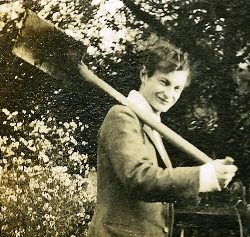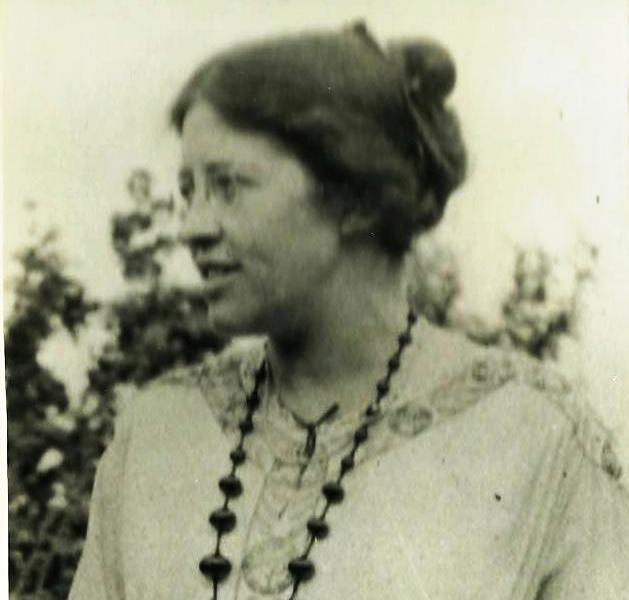

Ka Cox [1887 – 1938] and Will Arnold-Forster [1886 – 1951] were touched by and engaged in many of the great issues of their times: votes for women; progressive education; war and pacifism; modern versus traditional art; the preservation of the countryside; democracy and the rights of the working class; attitudes to sexuality; and much more besides. In shedding the comparative innocence of the pre-WW1 decades of their youth they found themselves deeply challenged by the profound moral questions raised by the war and its aftermath, and the struggle to avoid WW2 whilst combating fascism. They both rose to those challenges, and they gave them their all. Do-gooders without being condescending or complacent, children of their time and yet ahead of their time in many ways, each of them, separately and together, strived to make the world a better place. This biography is their story, but their story cannot be told in isolation from the stirring historical events at the heart of which they found themselves.
Will Arnold-Forster was the son of Liberal Unionist MP Oakeley Arnold-Forster and had three younger brothers, to whom he was very close. Like his mother, Mary Story Maskelyne, Will was artistic, and studied at the Slade school of art, rejecting a place at Oxford. He then lived and painted in Italy for two or three years, until the outbreak of the First World War brought him back to England. He joined the Royal Navy and served with distinction in the Admiralty, where he helped to mastermind the naval blockade of Germany which eventually assisted in bringing the war to an end.
In 1918 Will married Ka Cox, a year younger than him, and in 1920 Mark, their only child, was born. Will and Ka lived in Cornwall in a house called Eagles’ Nest, where Will created an outstanding garden in an unpromising landscape. He also devised the planting for the estate of Spedan Lewis of the John Lewis Partnership, and advised Barbara Hepworth on the planting of her sculpture garden, among similar projects. He was the author of Shrubs for the Milder Counties, the definitive work of his day on the topic. For over a decade he was the gardening correspondent for the Manchester Guardian, and when he was too busy to write his column, Ka helped him out, describing her cats playing amongst the shrubbery and showing herself to be no mean gardener.
Will rejected his conservative background and abdicated his inheritance of the family estate in favour of a younger brother, joining the emerging Labour Party in 1917 and standing unsuccessfully in the General Election of 1929. Radicalised by the wonton destruction of the First World War, he desperately wanted to avoid the second, working closely with Leonard Woolf and others. He was a strong advocate for the League of Nations, the forerunner of the United Nations. In 1933 he was among the first outsiders to visit the prototype concentration camp in Dachau shortly after Hitler came to power. Will spoke tirelessly at public meetings large and small, all over the country and abroad, and wrote many pamphlets and articles, as well as contributions to polemic books. He also made regular radio broadcasts on foreign affairs. He was also interested in the preservation of the countryside, votes for women, and modern education, among a host of other causes. Ka was as knowledgeable as he on all these issues, and frequently deputised for him. Will had the rare ability of understanding events as they occurred, and the even scarcer talent of being able to foresee their outcomes.
Ka Cox was the daughter of a Liberal stockbroker, whose mother died early. Her father remarried, and Ka became something of a mother-figure to her younger half-sisters – a role she was to retain in many of her relationships throughout her life. There was, however, much more than an earth-mother to Ka. Offered the choice by her father between a horse and its upkeep, and a university education, she chose the latter. In 1906 she went to Newnham College, Cambridge, to study history where she certainly obtained an education, although not perhaps the one she was expecting.
It was there that she fell in with a group dubbed by Virginia Woolf as the neo-Pagans, which included artists like Jacques Raverat, Gwen Darwin (who later married Jacques after Ka turned down his several proposals), and poets like Rupert Brooke. Ka had a disastrous affair with Rupert and became pregnant by him, but suffered a miscarriage. While she was at Newnham she became friends with Virginia and Leonard Woolf, and she helped to nurse Virginia through the mental breakdown she experienced shortly after her marriage to Leonard. Ka and the Woolfs remained lifelong, if uneasy, friends.
During WW1 Ka did excellent work with Serbian refugees in Corsica, for which she was offered an MBE, but she turned it down, earning poetic praise from Roger Fry. She later worked at the Admiralty, where she and Will met. She and Will both attended the Paris Peace Conference which followed WW1 and which many argue sowed the seeds for WW2. She shared Will’s interest in education, sending Mark to a radical new school in Germany, run by Kurt Hahn. When in 1933 Hahn, a Jew, was forced to leave his homeland, she helped him to get to England where he founded Gordonstoun school, which Mark also attended along with Prince Philip. Ka played an active role in establishing the school, and also in public life in Cornwall where she became the first woman magistrate in the county, as well as a school inspector.
Will was slight and wiry, while Ka towered over him. Passing as they did for the local gentry, they were fondly nicknamed Big Stick and Little Stick by their rural neighbours. Although Eagles’ Nest was situated on the wild and beautiful Cornish peninsular of Penwith, seven hours away from London, the house was constantly full of visitors, from neo-Pagans to members of Bloomsbury, Fabians, luminaries of the Labour Party and the League of Nations, journalists, writers, musicians, poets, and even a plenipotentiary (Haile Selassie). All were welcome at their door, and Eagles’ Nest, and especially the lovely garden, were put to work for the couple’s many causes, hosting whist drives, garden parties, and other fund-raising events.
Ka died before her time of a stroke in 1938, when Will was away on a speaking tour in north America. Will left Mark to cope with her funeral, a mistake from which his relationship with his son never recovered. After Ka’s death, Will married his and Ka’s friend Ruth Turner, the widow of the pioneering mountaineer George Mallory, whose body was lost for many decades on Mount Everest. Sadly, the marriage lasted only four years, as Ruth succumbed to cancer. During her short time in Cornwall she threw herself into war work and local life, founding the Women’s Institute in the nearest village, Zennor, which thrives to this day. Will spent WW2 in the Home Guard, allegedly helping to run an escape route for Jewish refugees. He continued to write, give talks, and paint and exhibit until his death in 1951. After his death, Mark sold Eagles’ Nest to the abstract artist Patrick Heron, who drew great inspiration from the garden Will had created.
Famous in their lifetimes, vital members of the intelligentsia whose convictions ultimately led to universal suffrage, the welfare state, the development of the Geneva conventions and the adoption of human rights principles – all issues under debate and attack to this day – history has largely forgotten Ka and Will. This biography aims to remedy that.
I still have some unanswered questions about Ka and Will. Please look at my questions page to see if you can help. I am also looking for some copyright holders.
If you like the sound of the book, and are an agent or a publisher. please get in touch with me via my contact page. (Please note: I am not interested in self-publishing.)
If you just like the sound of it, and would like to know if it gets published, you can do the same, and I will let you know if it succeeds.
